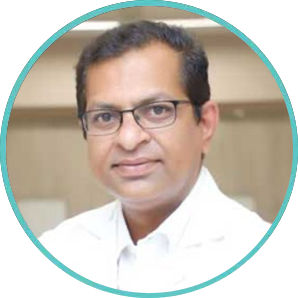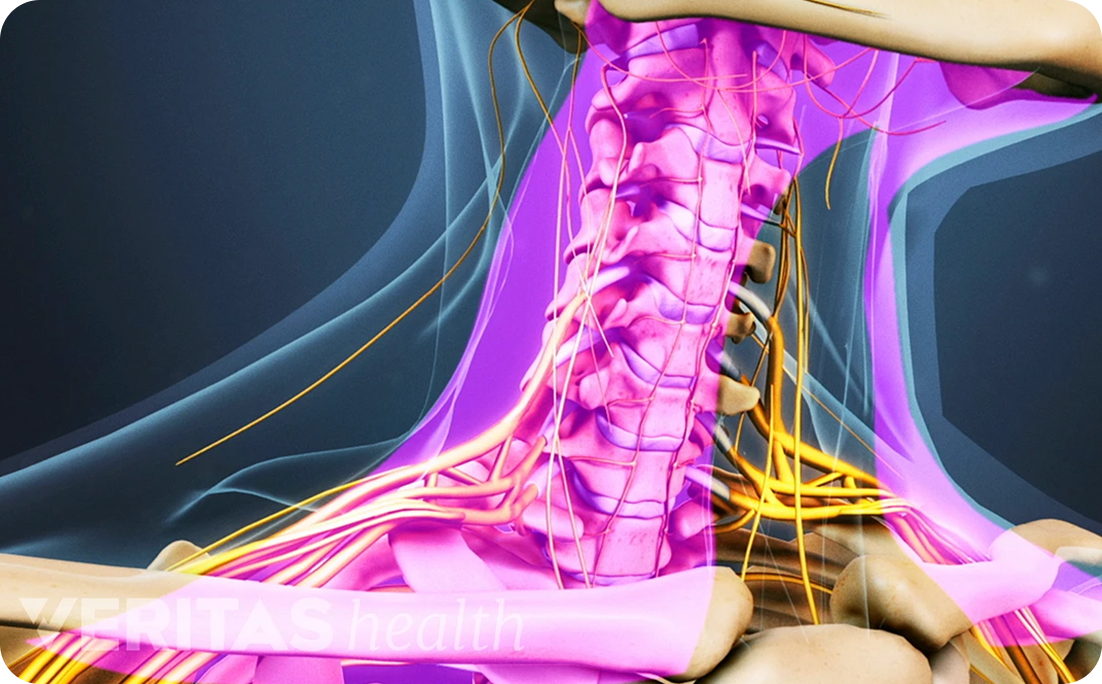What is an anterior cervical discectomy & fusion?
Healthy discs serve as a flexible cushion between the bones, allowing your neck to bend and rotate. Wear and tear on discs can result in herniation or thinning, which pinches the nerves
Discectomy literally translates as "cutting out the disc." A discectomy can be performed anywhere along the spine, including the neck (cervical) and the low back (lumbar). The surgeon accesses the damaged disc from the front (anterior) of the spine via the throat. By removing the neck muscles, trachea, and oesophagus, the disc and bony vertebrae are revealed. Surgery from the front of the neck is easier than surgery from the back (posterior), because the disc can be reached without disturbing the spinal cord, spinal nerves, or the strong neck muscles. Depending on your symptoms, one or more discs (single or multi-level) may be removed.
After the disc is removed, the space between the bony vertebrae becomes empty. To keep the vertebrae from collapsing and rubbing together, a spacer bone graft is inserted into the open disc space. The graft acts as a bridge between the two vertebrae, resulting in a spinal fusion. The bone graft and vertebrae are secured in place with metal plates and screws. After surgery, the body begins its natural healing process, and new bone cells form around the graft. After 3 to 6 months, the bone graft should connect the two vertebrae to form a single solid piece of bone. The instrumentation and fusion work in tandem, similar to reinforced concrete.
After fusion, you may experience some range of motion loss, but this depends on your neck mobility prior to surgery and the number of levels fused. If only one level is fused, you may have a similar or even greater range of motion than before the surgery. If more than two levels are fused, you may experience limitations in turning your head and looking up or down.
Artificial disc replacement has emerged as a viable alternative to fusion. Similar to knee replacement, an artificial disc is inserted into the damaged joint space to preserve motion, whereas fusion eliminates motion. Artificial discs have similar outcomes to ACDFs, but they are not suitable for people with facet joint arthritis or weak bones. Consult with your surgeon about whether ACDF or artificial disc replacement is right for you.
Who is a candidate?
You may be a candidate for discectomy if you have the following:
Symptoms of a herniated or degenerative disc include significant weakness in the hand or arm, worsening arm pain compared to neck pain, and symptoms that do not respond to physical therapy or medication.
ACDF may help treat the following conditions:
Herniated disc: The rubbery centre of the disc can bulge or rupture due to a weak spot in the wall (annulus). This material presses on a nerve, causing pain and swelling.
Degenerative disc disease is the drying and shrinkage of discs with age. As the disc thins, the vertebrae rub and pinch the nerves. These changes can result in canal stenosis, bone spurs, or disc herniation.
Cervical stenosis or myelopathy: is a narrowing of the canal through which the spinal cord passes. CSM is the result of bulging discs, enlarged facet joints, and thickened ligaments. Spinal cord compression causes pain, weakness in the arms and legs, and difficulty walking.
Case Study By

Dr. V. Anand naik
MBBS, MS Orthopaedics, Fellowship in Spine Surgery, FAPOA, FAPSS
Experience
22 years of experience in Orthopaedics, Spine Surgery.
Work in Stats till 2023
- Number of Artificial disc replacements & lumbar disc replacement: 500+ per year
- Minimal invasive surgeries approx 450+ per year
Associations
PSRI Multispeciality Hospital, Delhi
Read More


